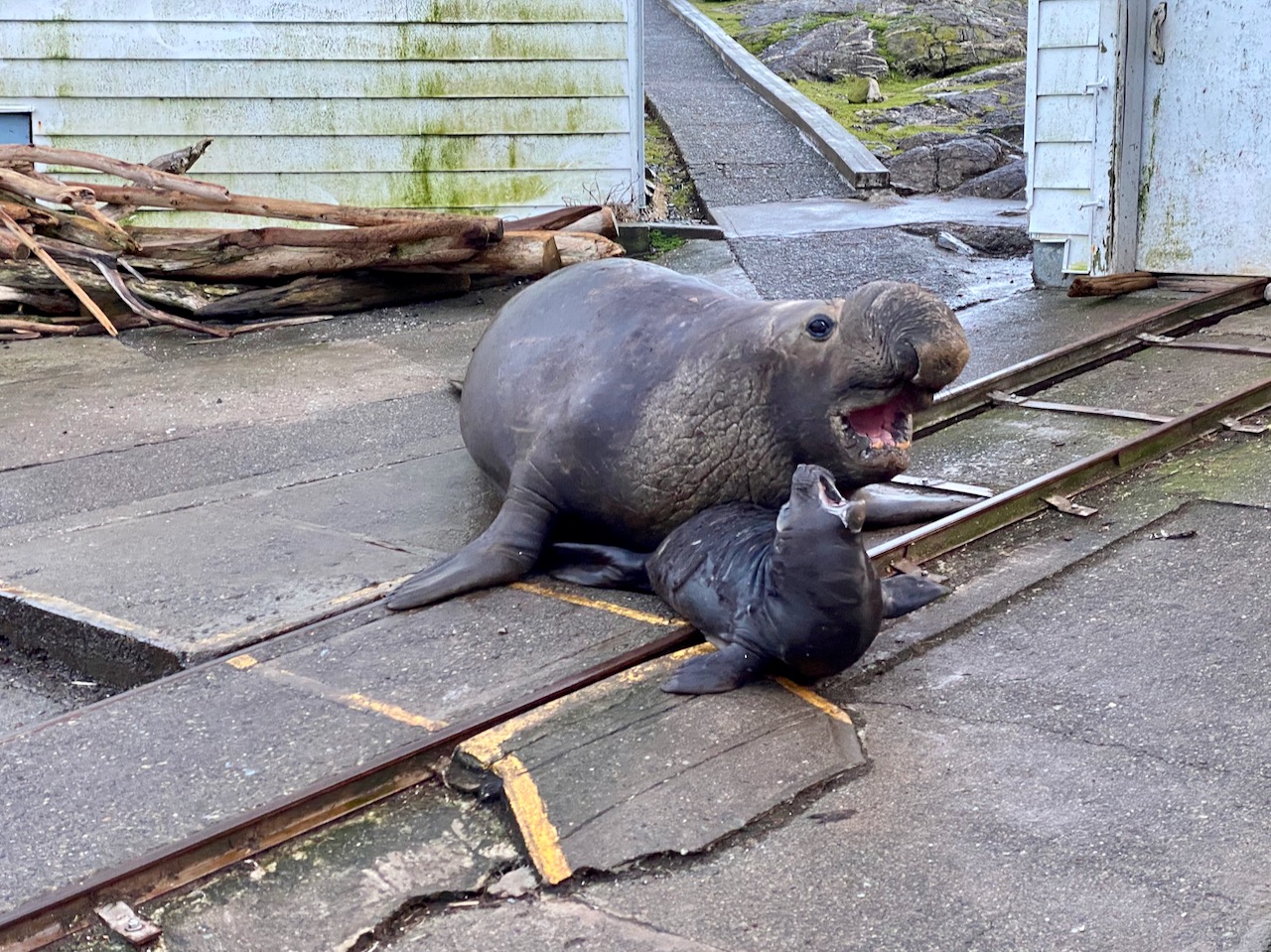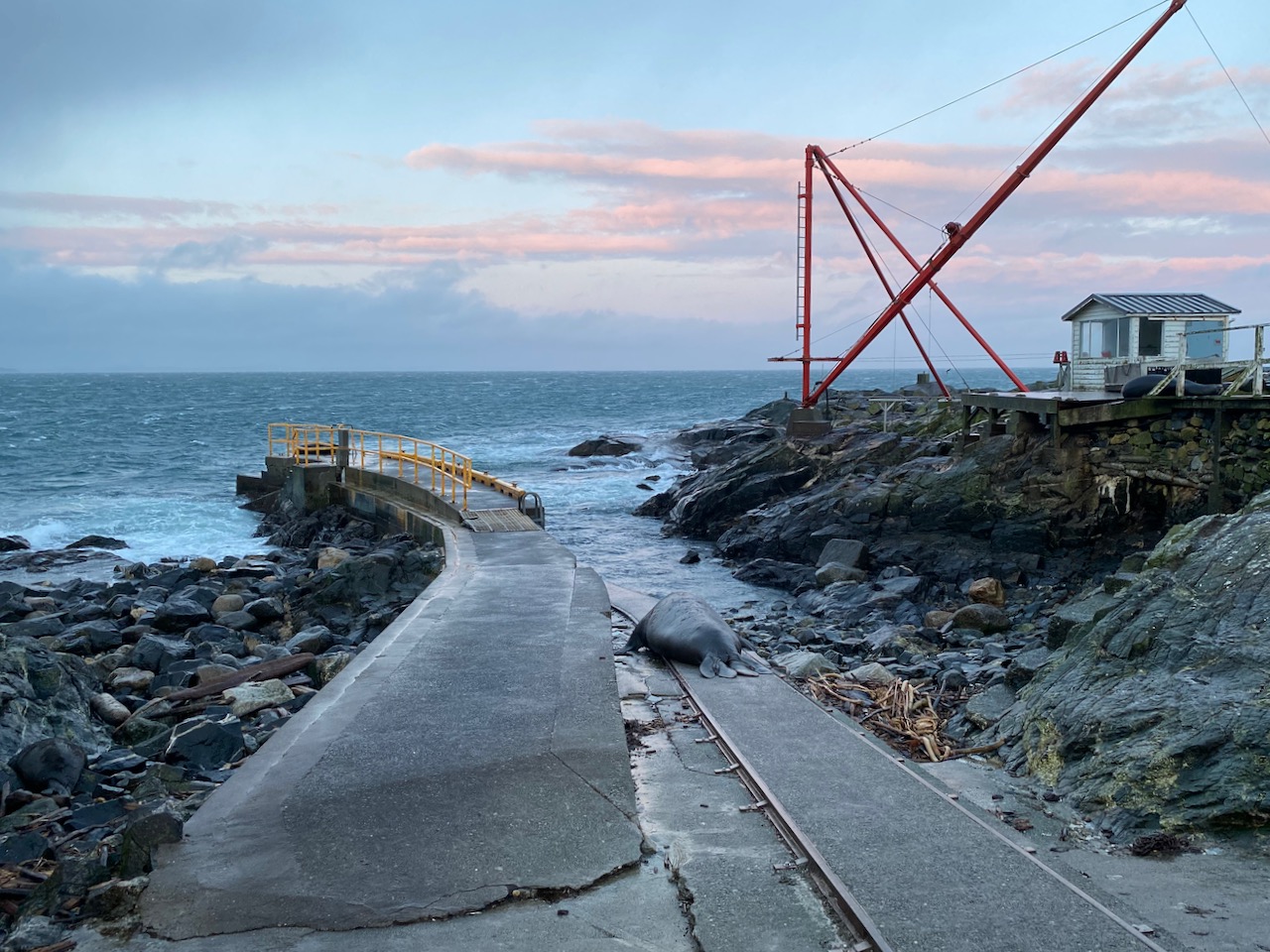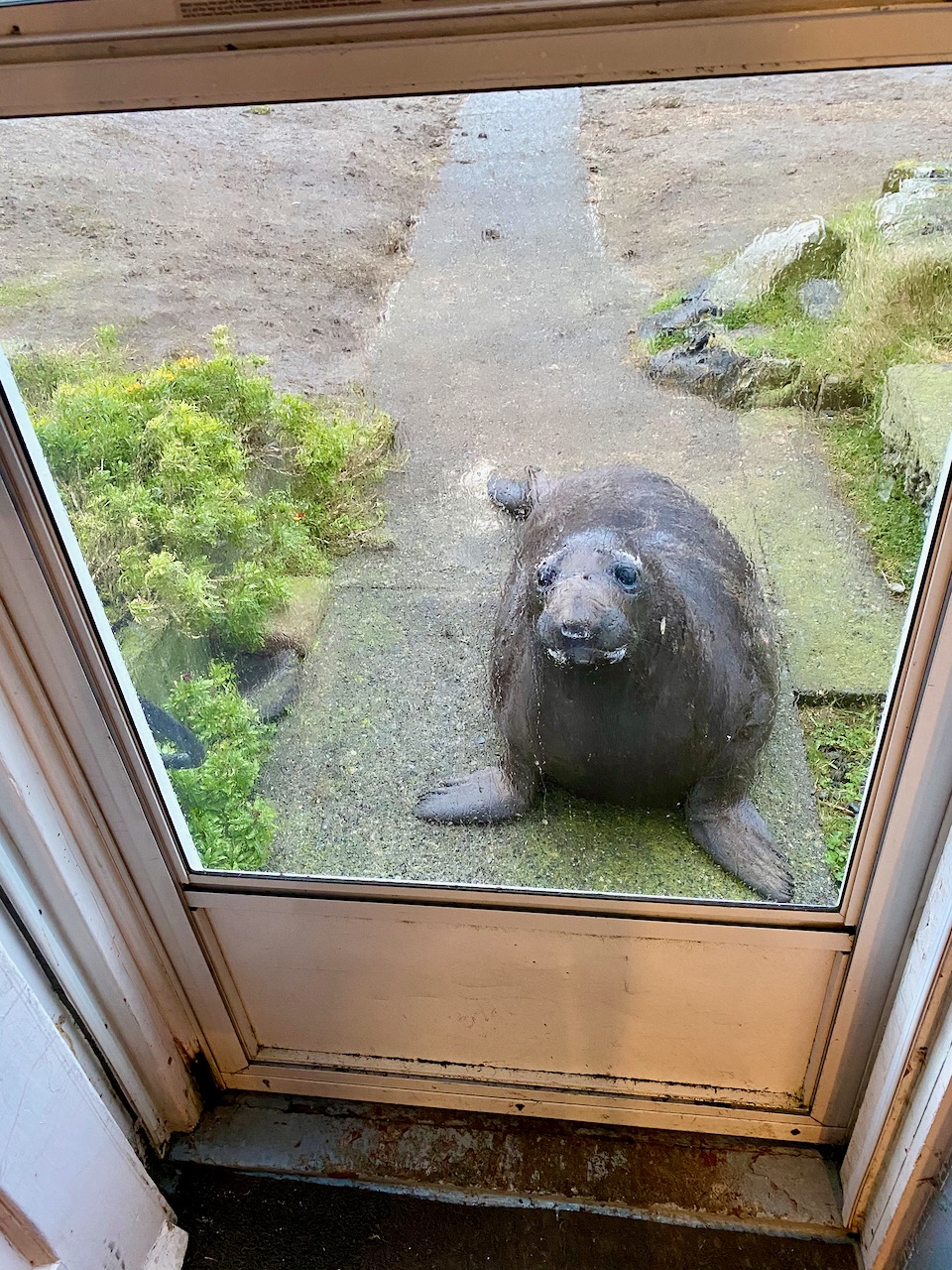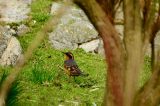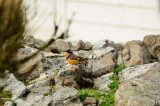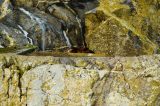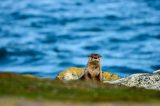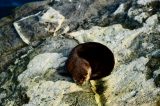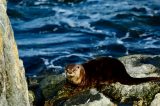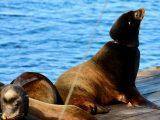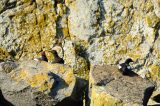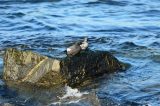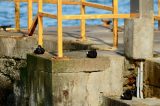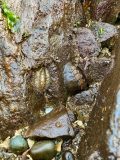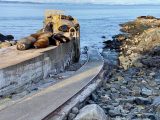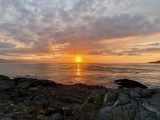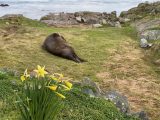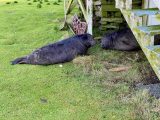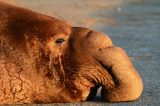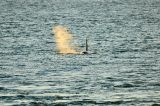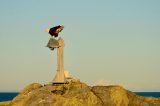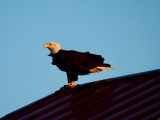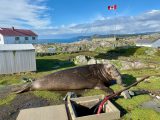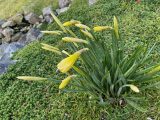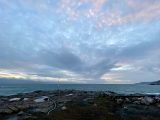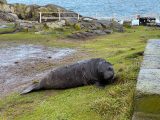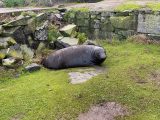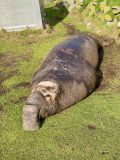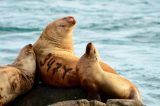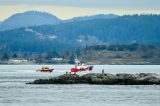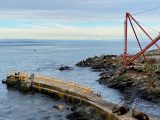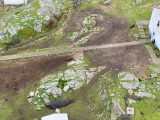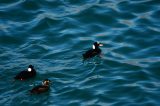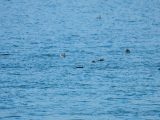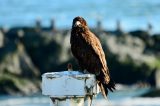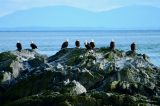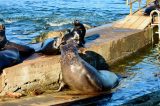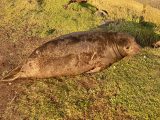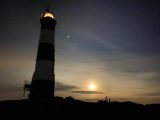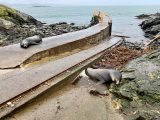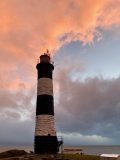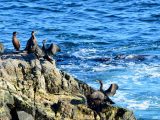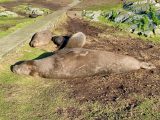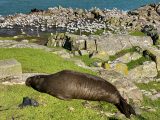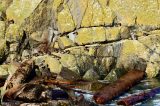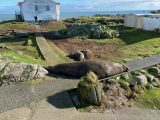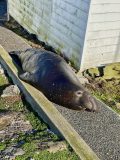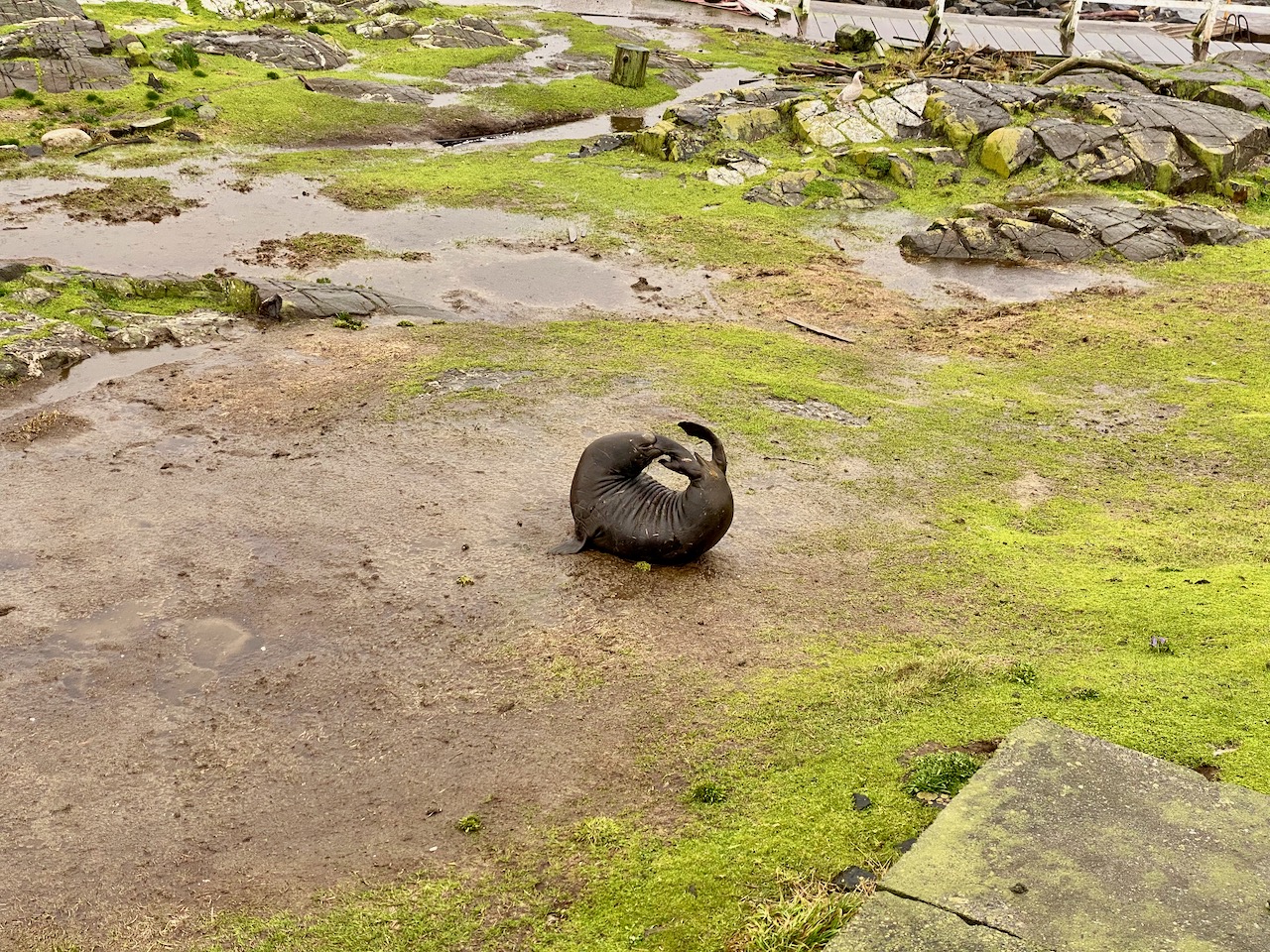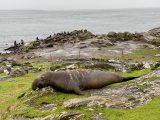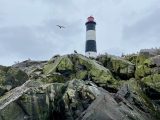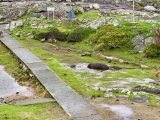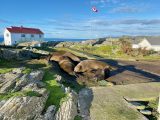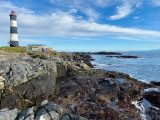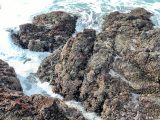Wind: yesterday 6-50 knots from E to SW to W, today 9-44 knots from W to N
Sea State: yesterday up to 2 m waves, today rippled
Visibility: yesterday 5-10 NM, today 5-15 NM
Sky: yesterday overcast and rain, today partly cloudy with rain and hail in morning
Temperature: yesterday 4-8 °C, today 4-7 °C
Atmospheric CO2: 414.13 ppm (recorded by NOAA at Mauna Loa Observatory, Hawaii)
A big storm rolled through yesterday, with westerly wind gusts of up to 50 knots. Waves were crashing on the west side and sending spray across the island. There were only a few sea lions on the main island. Others might have been taking shelter in a less exposed place.
The male elephant seal pup was at the water’s edge by the boat ramp. He got his first taste of salt water, as he blew bubbles in the water and splashed around. He might have tumbled down the rocks to get to the water, as he was underneath the wooden walkway several metres above there in the middle of the morning. He eventually made his way up the boat ramp, later being met by the adult alpha male. I thought they were having some father and son bonding time, but it progressed to the adult’s mouth around the pup’s body. They both went their separate ways. The pup didn’t have any bit marks on him, so it doesn’t appear the intention of the adult was to injury the pup.
The lighthouse steps and lantern room got a much needed sweep and mop yesterday, to get rid of the dirt that had accumulated for a while on the 99 steps inside the tower.
The boat from Pearson College came out twice today. In the mid morning, Greg dropped off Hubert and Hamish, who are staying overnight to do some photography. The boat returned in the afternoon with six visitors from Pearson. Heather, Ruth, Sarah, Michelle, Greg and Mark had a quick tour of the island. No other boats were seen in the ecological reserve over the past two days.
UPDATED February 26: photos have been added now that the website is fixed.
- The male elephant seal pup getting to know the water
- Father and son bonding in the elephant seal way
- The alpha male is heading out to the water on the boat ramp. The male pup is in the rocks beside the start of the jetty.
- The youngest female elephant seal pup was looking at her reflection in the mirror, possibly thinking it was here friend the other female pup.


